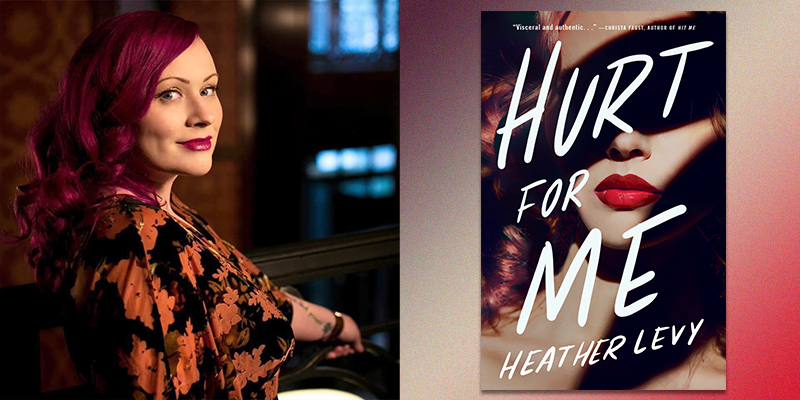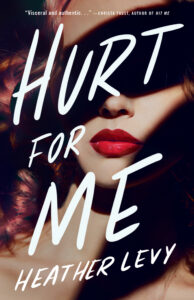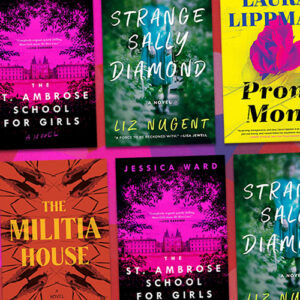Heather Levy is the author of Walking on Needles and a nonfiction series on human sexuality and BDSM, as well as the forthcoming Hurt for Me. She lives in Oklahoma, where her novels are set. In Hurt for Me, a survivor of abuse finds empowerment and financial independence in her career as a dungeon master, but her new life is threatened when one of her clients goes missing, just after telling her about a private party with no rules—and no safe words. In Hurt for Me, Heather Levy draws a stark difference between the consensual, safe practices of BDSM and the dangerous behaviors of those who would take advantage. When we were given the opportunity to interview Levy as part of revealing the cover of her new book, I decided to ask her craft advice for writing about kink responsibly.
Molly Odintz: What is your advice for writing sex?
Heather Levy: My biggest piece of advice for writing about sex is to go for it without fear of getting it wrong. When a sex scene is highly orchestrated on the page, it can read as inauthentic and robotic. Sex isn’t perfect, and that can be reflected in scenes while still maintaining the steam factor. I love seeing slight stumbles when two characters are having sex because it creates a sense of intimacy. I want to be in that space with the characters, in their heads as they’re experiencing each other and all the emotions—lust, trepidation, embarrassment, etc.—they may feel.
MO: What were your considerations when it came to portraying the kink community?
HL: Anytime I’m writing about kink, my one goal is to present it as authentically as possible. As a member of the kink community, I want to show BDSM and other aspects of kink as a normal part of people’s sexuality. In the case of Hurt for Me, my protagonist is a single mom and business owner. She worries about trying to be a good parent and keeping afloat in a struggling economy just like anyone else. Her love of kink is only one layer of her life, as it is with many within the kink community.
Interview continues below cover image.

MO: How has kink been treated by mainstream culture in the past? And how do you think that’s changed over the past decade or so?
HL: I cringe every time I read a book or watch a show or film displaying kink as a character flaw. How many times do we see a sadist in a film or show as the “good guy”? Or a submissive person who’s also strong and kicks ass? Mainstream culture is still stuck on the Madonna-whore complex where the chaste characters get the gold, and the sexualized characters are kicked to the curb or murdered off. Think most crime TV shows. But I do believe we’re seeing improvement in how kink’s presented in mainstream culture. One show I loved is Netflix’s “How to Build a Sex Room.” It’s not only kink positive but informative for people who are new to those experiences.
I sometimes long for the days of films like Belle de Jour, Bound, or Blue Velvet to help offset the Fifty Shades franchise, but there have been more recent kinky films like The Duke of Burgundy and even the fun Korean rom-com Love and Leashes that give me hope.
MO: Who are the authors who’ve written about sex work and/or kink best, do you think?
HL: I absolutely adore Tiffany Reisz’s writing. Her Original Sinners series is sexy, funny, and portrays kink and sex workers in an authentic manner. You really get to know and root for her characters throughout the series, and—whew—is it steamy! I also love A.R. Torre’s work in The Girl in 6E she gives readers one of the most unconventional sex workers I’ve ever read who also happens to kick ass. There are some newer writers I’m also excited about, including Briana Una McGuckin, whose debut On Good Authority combines two of my favorite things: kink and the Victorian era. The build-up was so hot I thought the pages would burst into flames! Anything by Christa Faust, including her graphic comic series HIT ME, is stellar. Her work inspires me to take chances within my own and push boundaries.
MO: What’s your advice for balancing between character building and moving the plot along?
“Kink is about voicing your desires without shame, and that alone can be empowering.”HL: To me, it’s important to give readers some breathing room during a major plot point. This is also a natural moment to allow characters to react and process what’s happening in the book before bouncing on to the next scene. Part of character building is throwing hurdles at the protagonist and seeing what they’ll decide do and how they’ll overcome them. It’s in that decision-making where the plot can progress while still building layers with the character.
MO: Your novel talks a lot about women and agency—losing it, wrestling it back. What were you thinking about with control, and power, and women’s experiences, when you were writing the novel?
HL: I thought a lot about what’s been going on in society within the last few years and how women’s bodily autonomy is being stripped away. More and more, women are having to find creative and effective ways to take back agency, whether it’s within their own intimate relationships, in the workplace, or getting involved in politics. Kink, when consensual, is such a powerful way for women to take control of their sexuality. It doesn’t matter if they lean submissive or dominant or somewhere in between. Kink is about voicing your desires without shame, and that alone can be empowering.
MO: What’s a question you wish you got asked more?
HL: Do you think AI will eventually kill publishing if it continues to go unchecked? My answer: yes. I do have a fear of being a new author and having my lifelong dreams crushed by AI-generated stories becoming bestsellers, which is a real thing happening today. Society needs writers, not computers, to reflect our experiences as humans.
***


















